Manakin-Sabot, Virginia, United States
Architect: Lester George (2001)
7,203 Yards, Par-72
Rating/Slope: 74.8/139
My Quick Review: Strategic Design; Options; Perfect Maintenance Meld -- Kinloch is a special place!
My only experience with Lester George's work was the excellent renovation of Country Club of Florida, and I could not wait to see what he had created at Kinloch.
Strategic design is alive at Kinloch. Man-made features sit naturally on the land to create decisions that force the golfer to consider the overt man-made hazards and then to question his decision once his ball has reacted with the land. The type of golf course that one must play many times to understand. I can imagine spending a few days on property playing the course over and over would bring the golf course and its strategies to life. I know there are several shots I hope I have the opportunity to play again.
The level of green contour was, to me, surprising. When one considers many of today's top modern designs, they have several, if not many, greens that are extreme. I think Lester designed Kinloch's greens to be played FAST. Their tilts are subtle and for the most part there is little internal contour. Of course, there are exceptions -- the plateau on the 4th green, the spine on the 6th green, the rolls on the 12th green -- but the greens would (I think) be fairly uninteresting if they aren't firm/fast.
I have read that the main criticism of Kinloch is that there are simply TOO MANY split fairway type holes. I think we all know that the split-fairway hole is a very difficult one to execute well as all too often there is only a single realistic option and a second fairway that is maintained without reason. Of course, one would have to play these holes more than just once to really understand them, but I think the split fairway holes at Kinloch are ALL very well done. Equally important, pin position dictates the importance of picking a line.
On to the photo tour...

Handsome cabins complete with lit putting green:
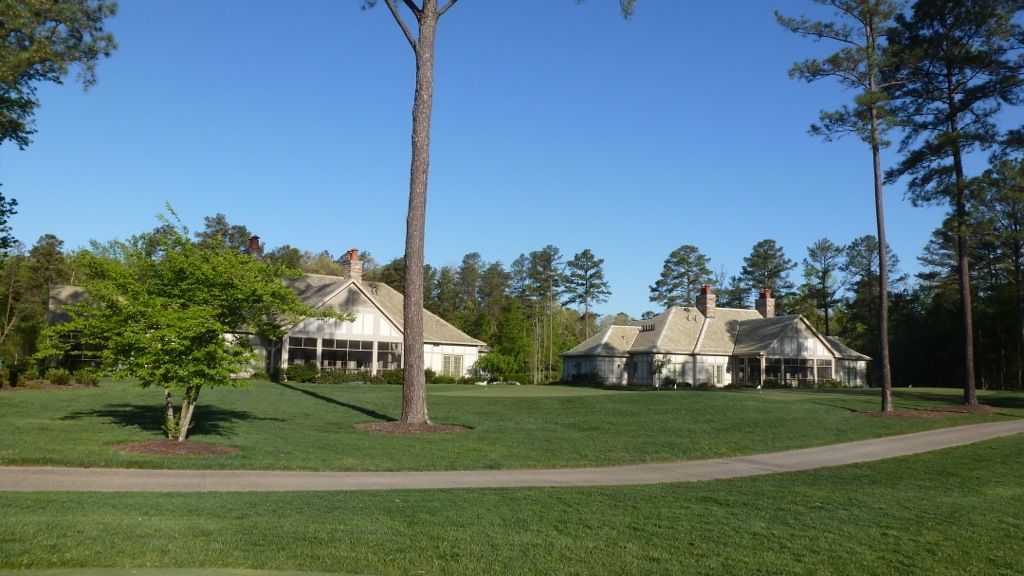
The approach to the up and over first:
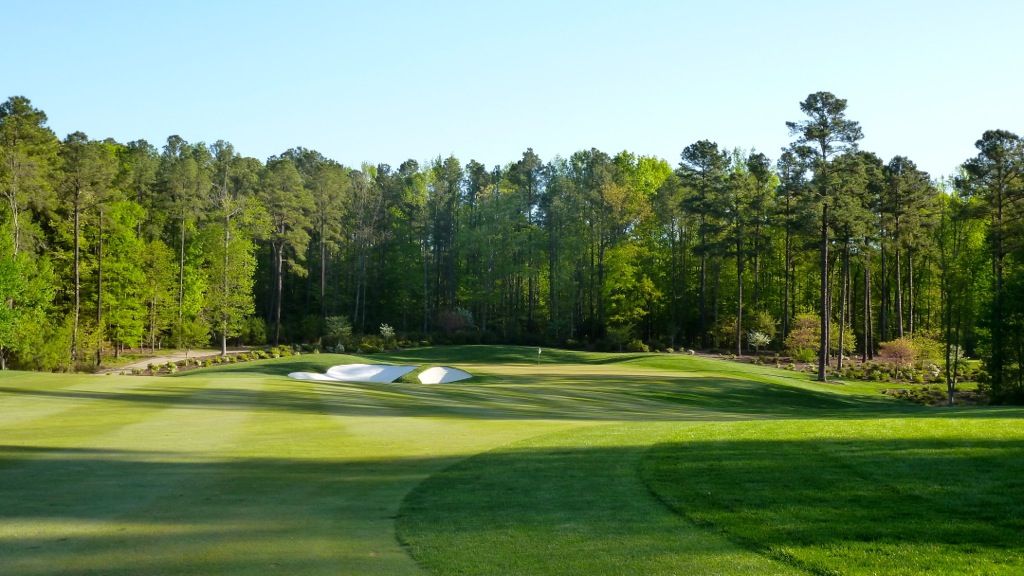
An excellent 'bottle hole' at the second, where a trio of bunkers splits the fairway. Playing to the left leaves an at-grade approach up the throat of the the green:
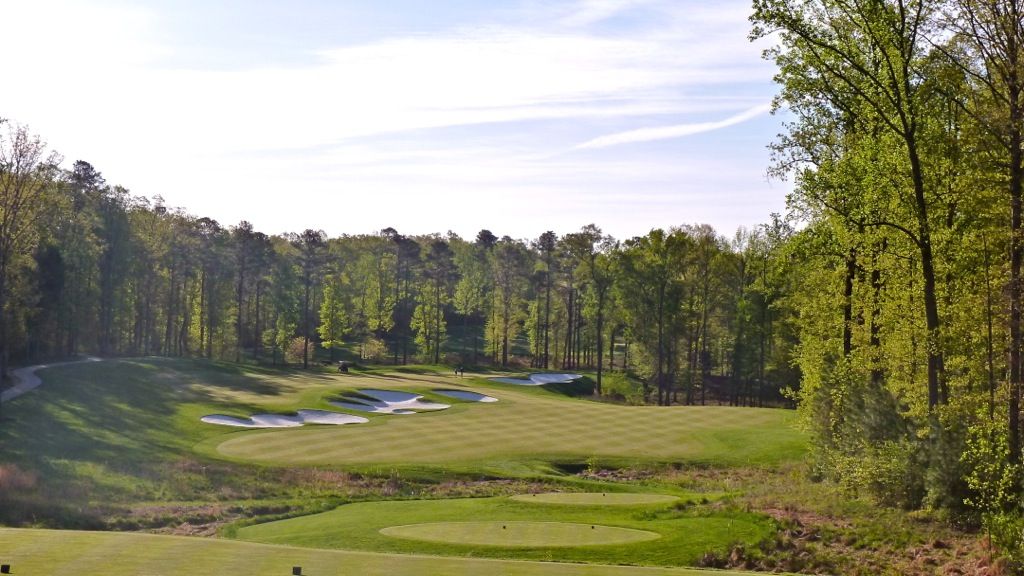
The mid-length par-5 3rd as seen from behind:
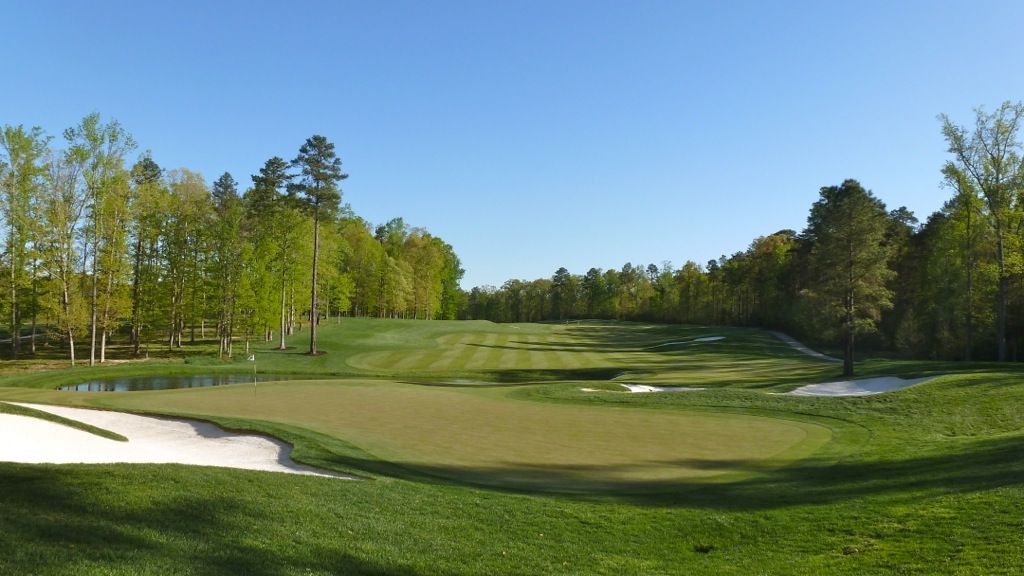
The 4th is clearly driveable for some and the decision to play left or right will be dictated by pin position. On this day a hybrid to the right left a simple sand wedge approach into the tilt of the green:
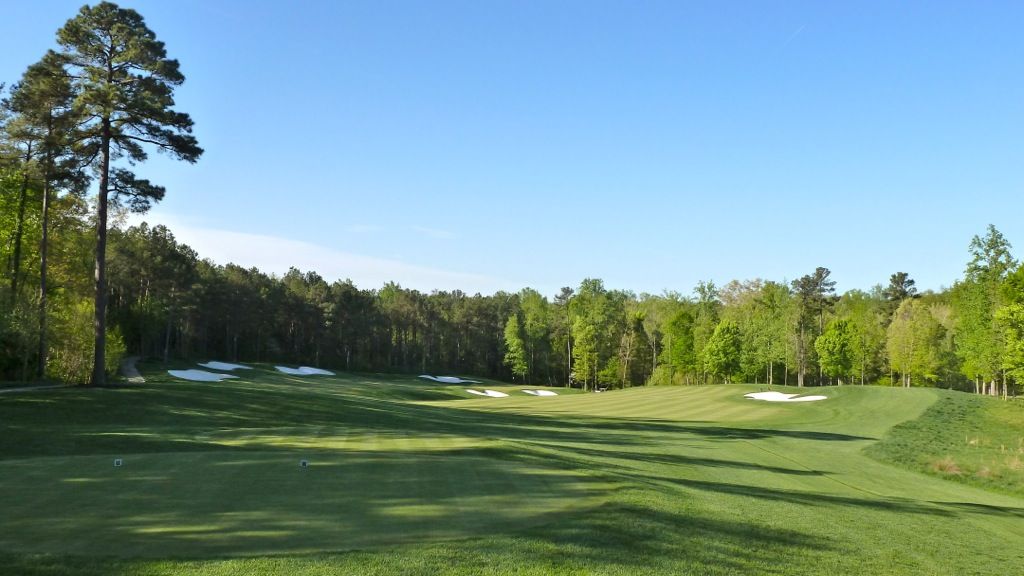
The uphill par-3 5th:

The par-4 6th is a forced lay-up for most, but the golfer must choose whether to lay-up right for the preferred angle or whether to challenge the narrower left portion of the fairway to leave a shorter approach:
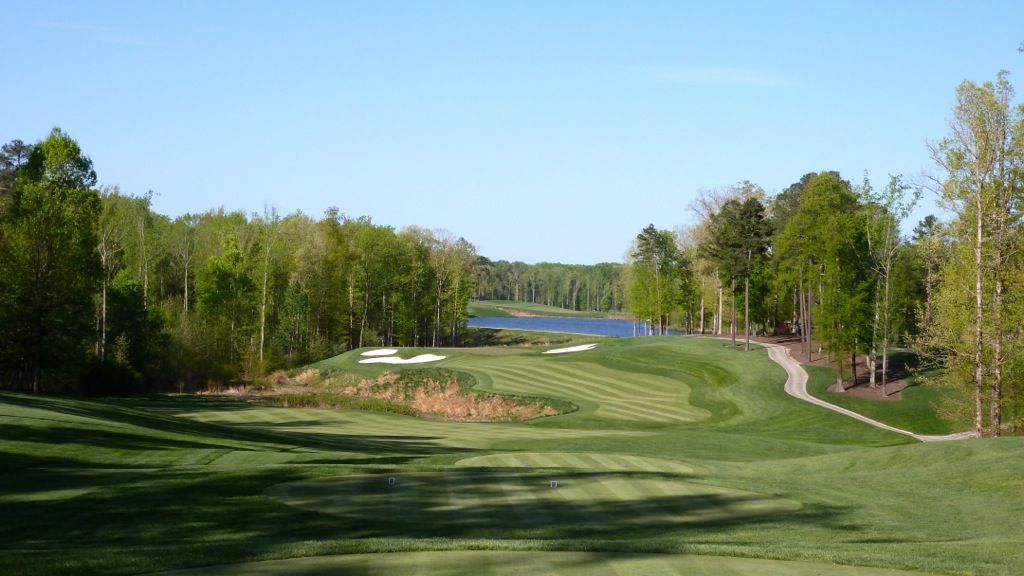
The par-3 7th can stretch to north of 230 yards, but plays to a more manageable 190 yards from the 6,500 yard set of tees:
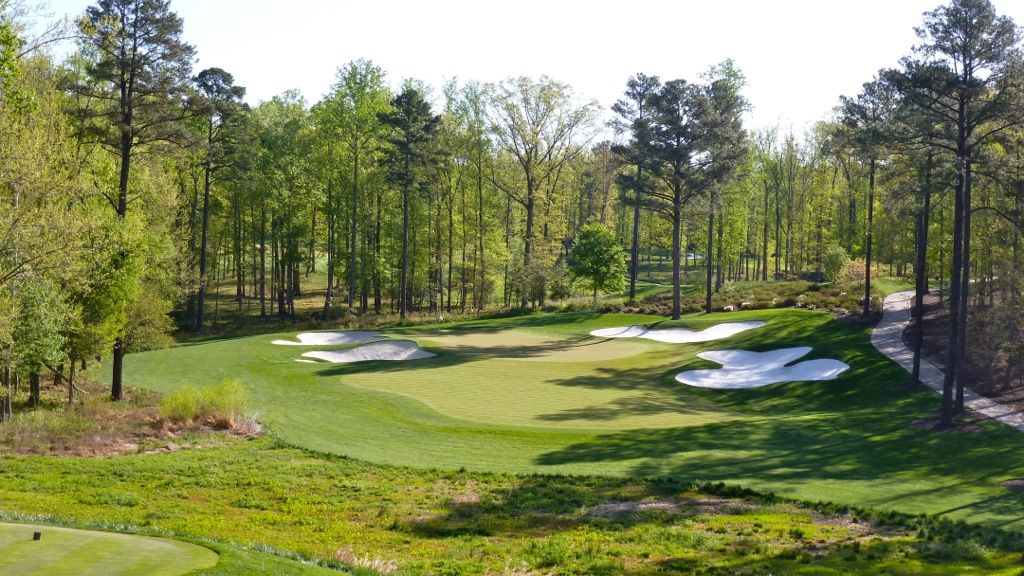
The 8th is a long par-4 where the grade of the fairway creates a speed-slot for golfers taking the bold line from the tee:
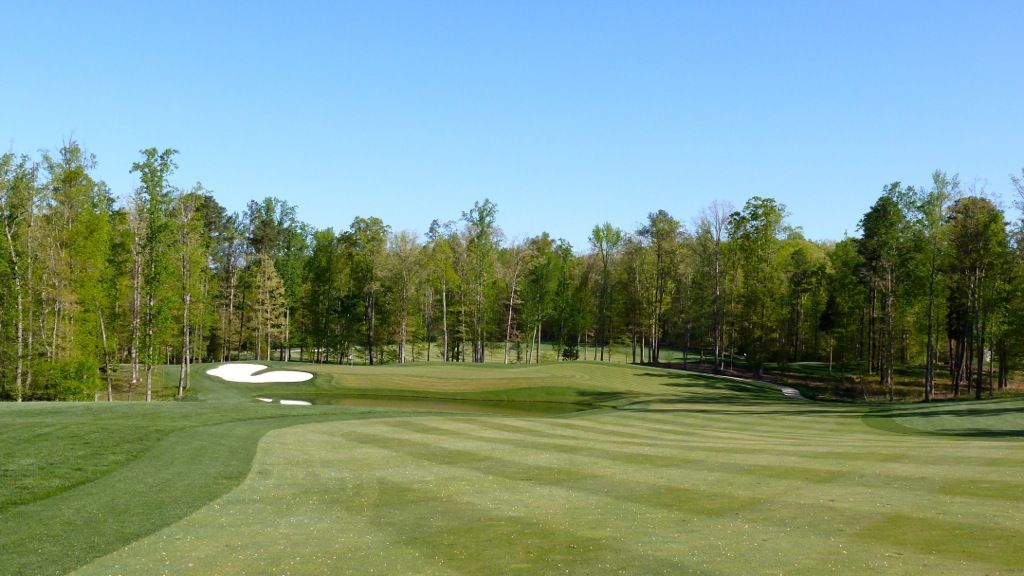
An all-carry approach is required at the 8th as a steep false-front is unforgiving:
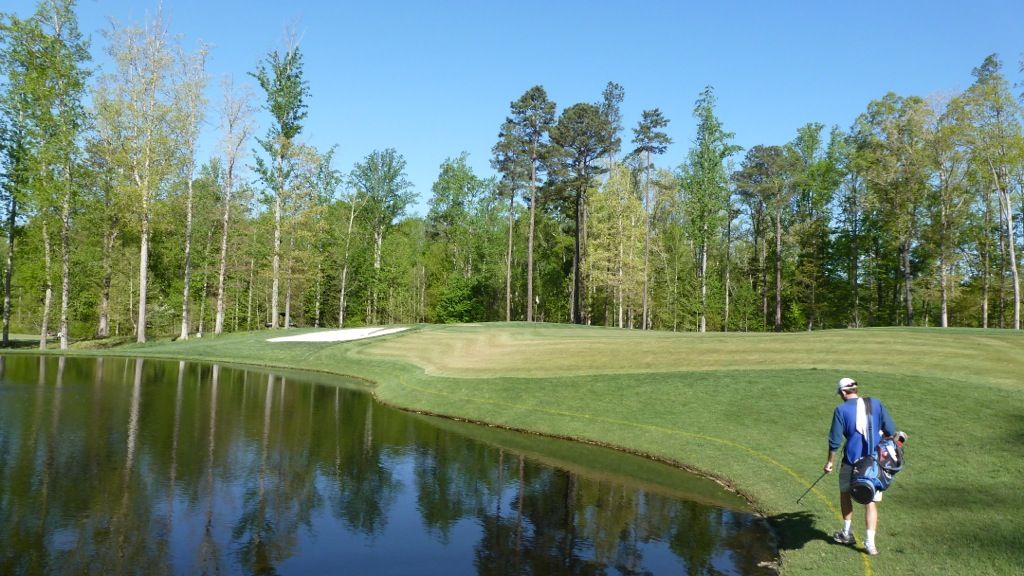
Options, options, options at the par-5 9th! Golfers hoping to reach the green in two will want to challenge the narrow right fairway; those planning on playing the hole as a three-shotter are fine playing left:
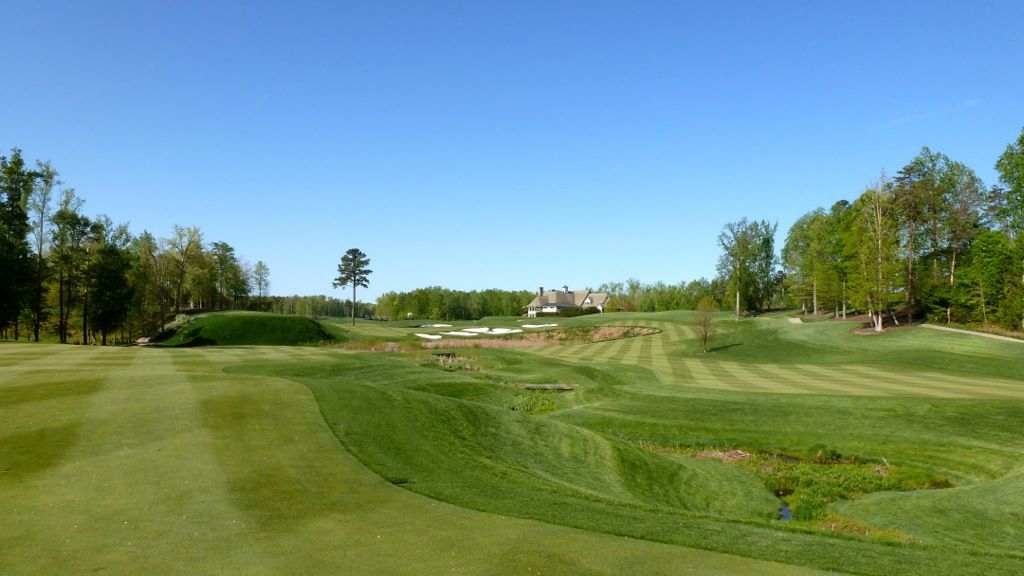
The 9th from behind:
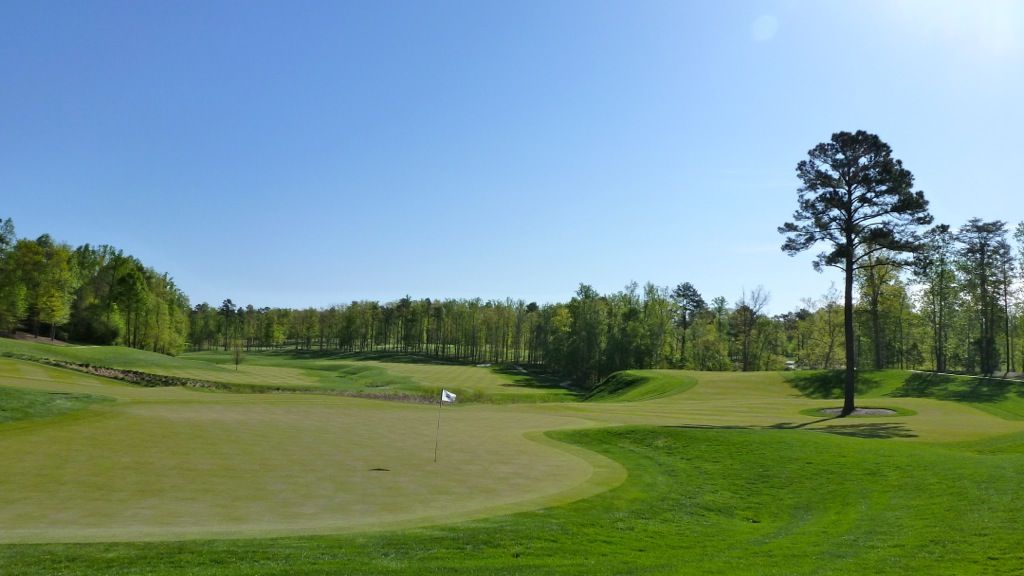
After a long transition, the golfer reaches the long par-4 10th, which is made longer by a fairway that tilts back toward the golfer.
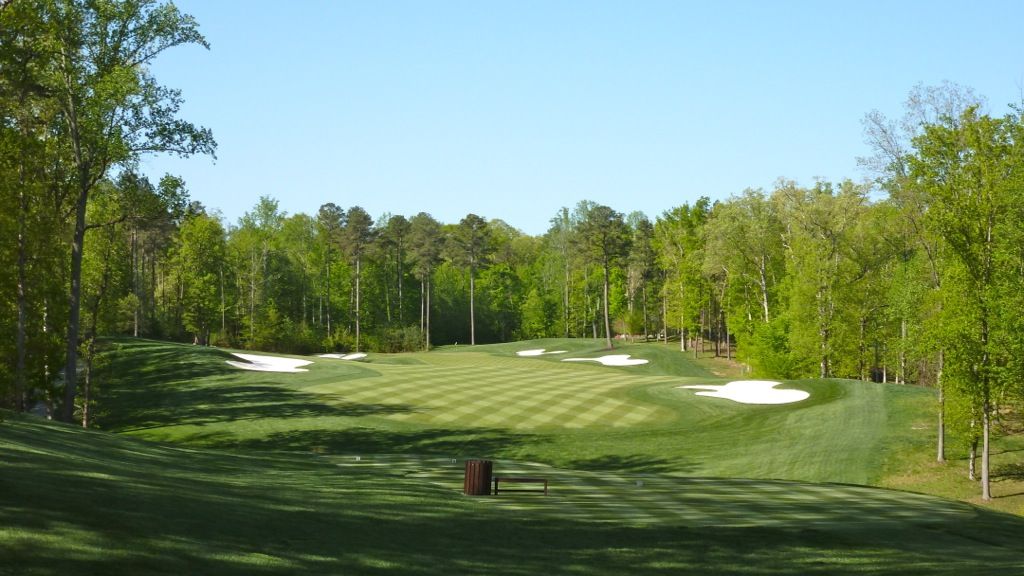
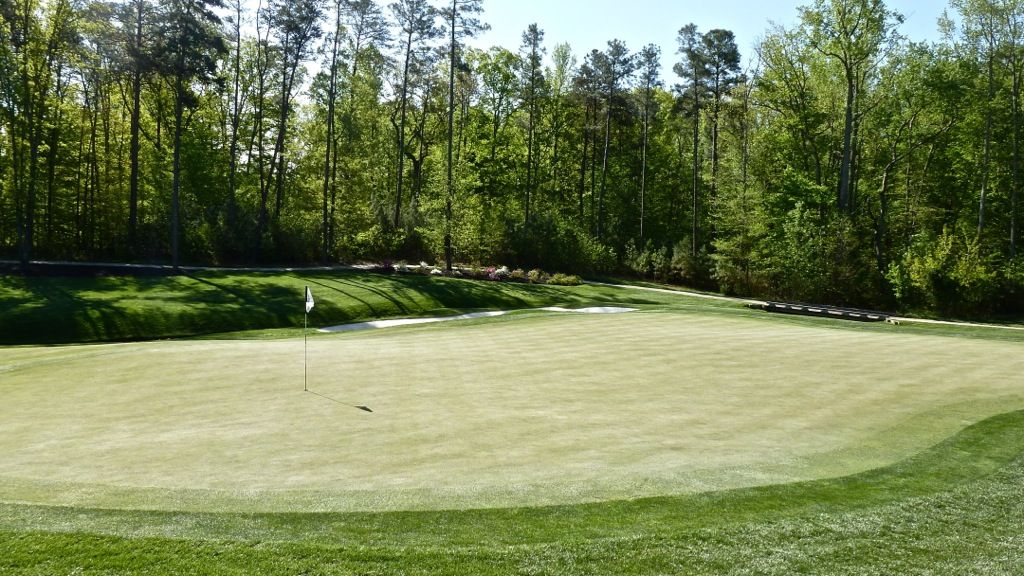
Another split-fairway at the short par-5 5th, that plays downhill and is reachable in two for nearly everyone. The golfer has the option of playing the wider left side, or the narrow right, which widens over a series of bunkers.
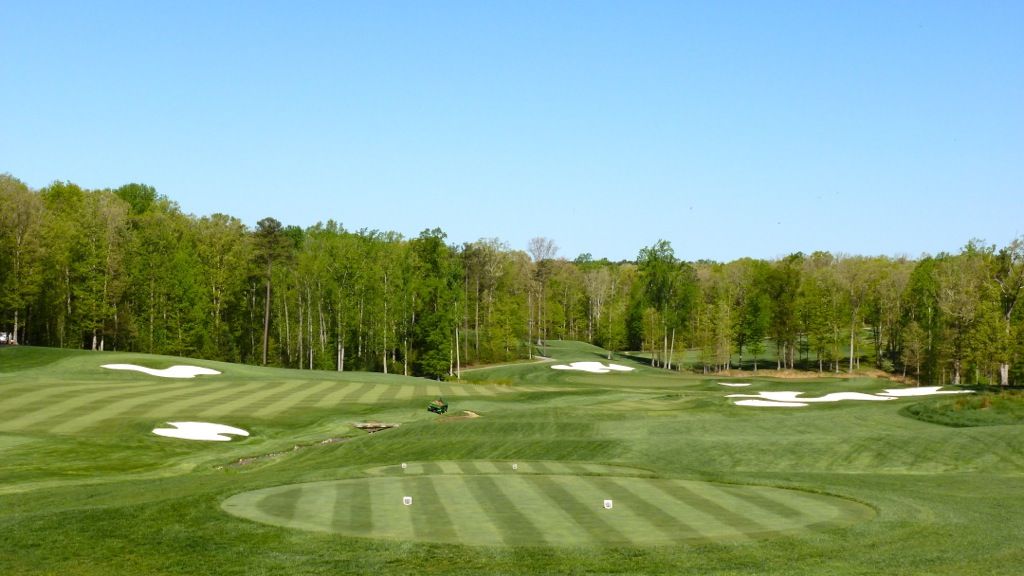
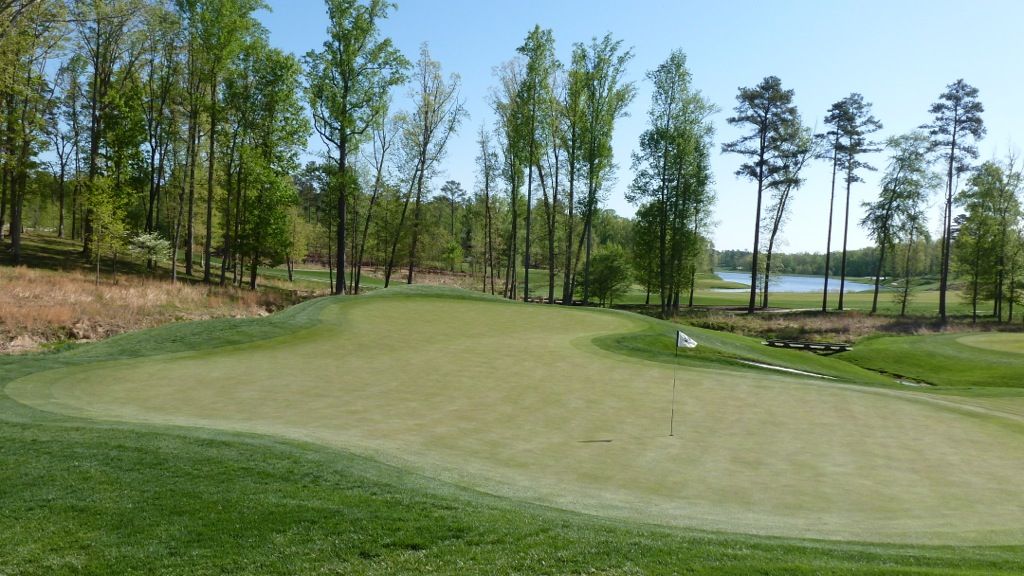
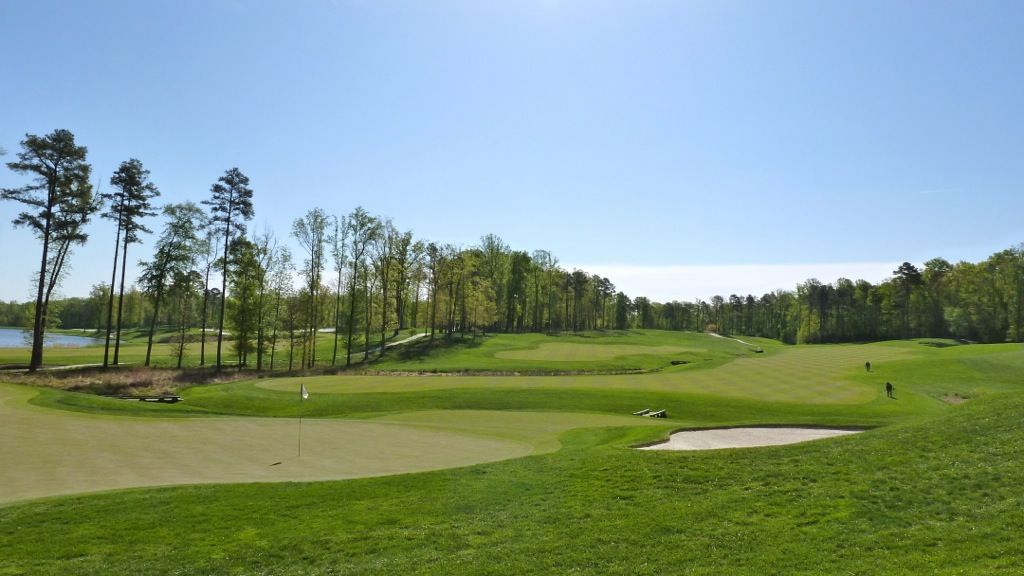
After the reprieve at the 11th, the golfer faces another long and uphill par-4 at the 12th. The green is one of the most severely contoured on the course.
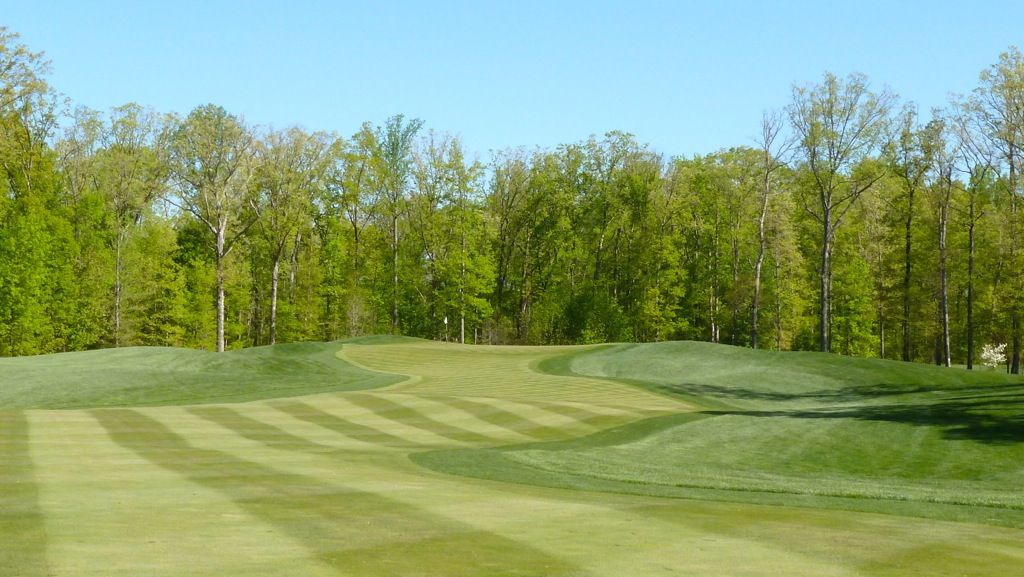
The third par-5 in five holes at the 13th. The golfers eye is drawn to the right, but tee shots should be played away from the Line of Instinct. The second half of the hole plays downhill and the approach to this open-front green begs for a running shot.
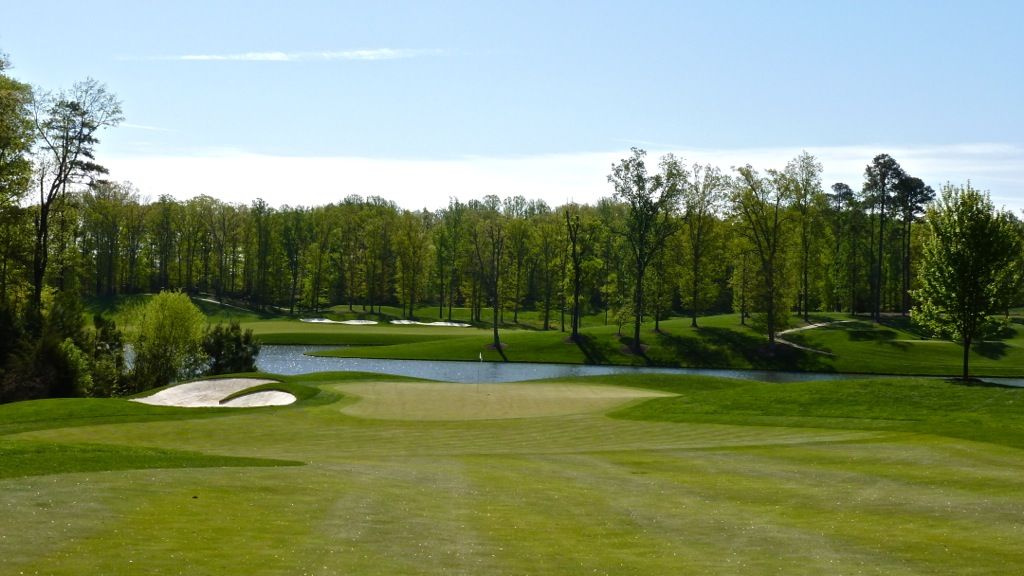
The 14th at Kinloch is a 130 yard par-3 set hard against the lake. My first thought was that this short hole was a connector hole to get from the interesting, rolling land that occupies the 13th and 15th holes. From the tee, especially with the pin I played, the hole is easy, simple, boring even.
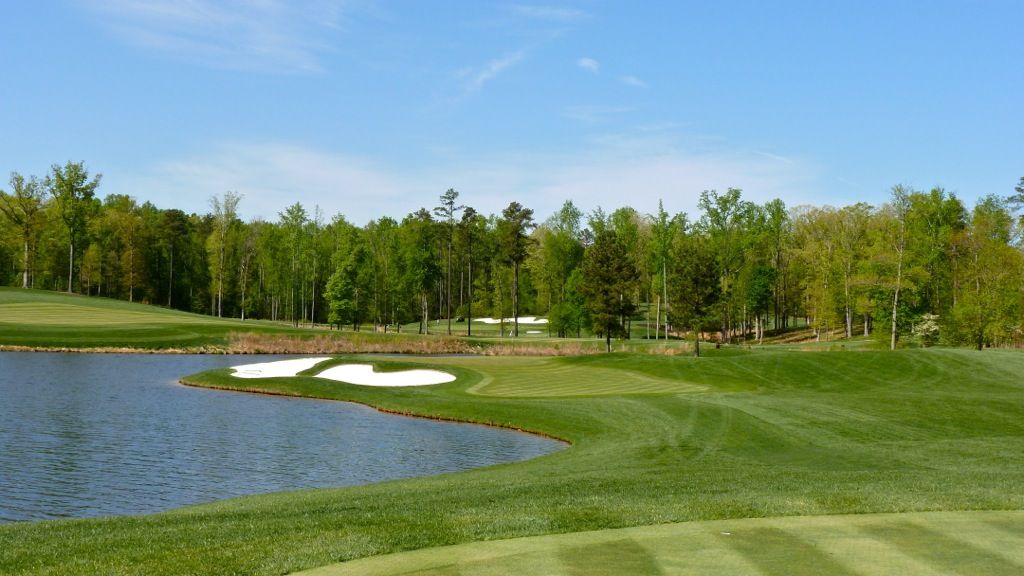
What's amazing is that the entire interest in the hole cannot be seen from the tee. The spine in the centre of the green. The blind portion of the putting surface behind the hill on the right. The angled back edge of the green. Long runs off into the water. What looks easy... is not!
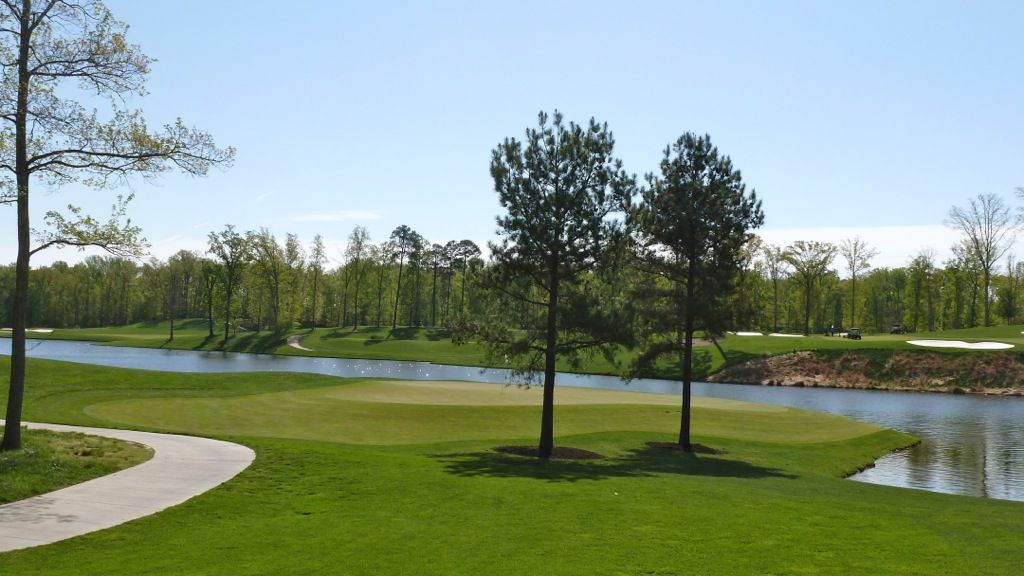
Another split fairway hole at the 15th. Long grass that ran the length of the left side of the hole has been removed and the option to play left for the short route to the green all the more tempting.

But as seen from the left, it is useful to sneak a peak at the pin position when on 12 to help with decision making on the 15th tee.
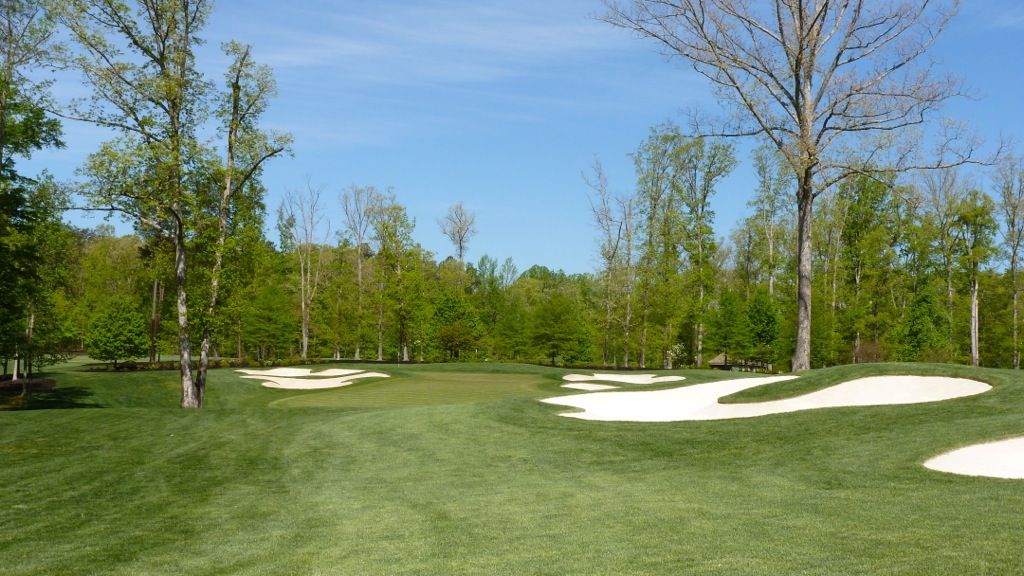
The 16th is a brutish par-4. The golfer will always be tempted to challenge the carry on the left, but wind direction and choice of tees will determine whether that is a realistic option.

Though this photo was taken from 150 yards out, many approaches will be played from 200 yards or more. The long green is open in front and a small feeder slope will accept running approaches.

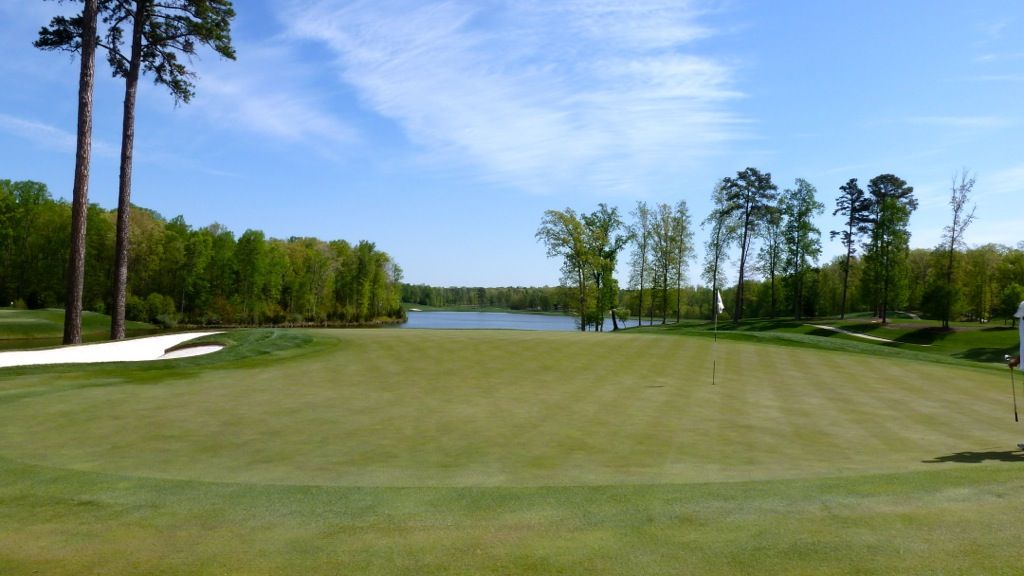
Another visually attractive hole at the subtly difficult 190 yard par-3 17th. It has hard to find a good location to miss this tee shot as a deep swale left and a bunker that plays down the tilt of the green from the right both leave very difficult recoveries.
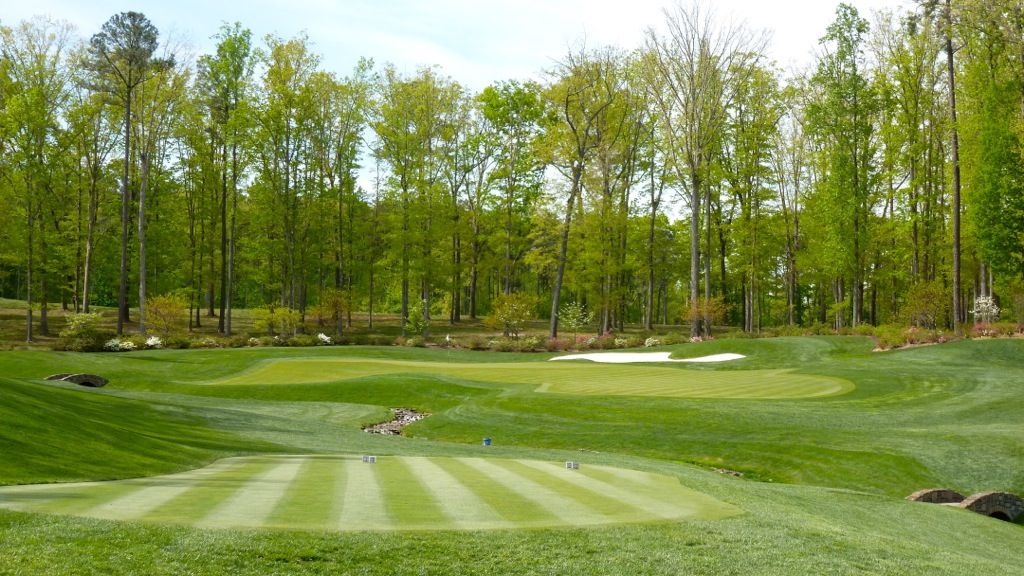

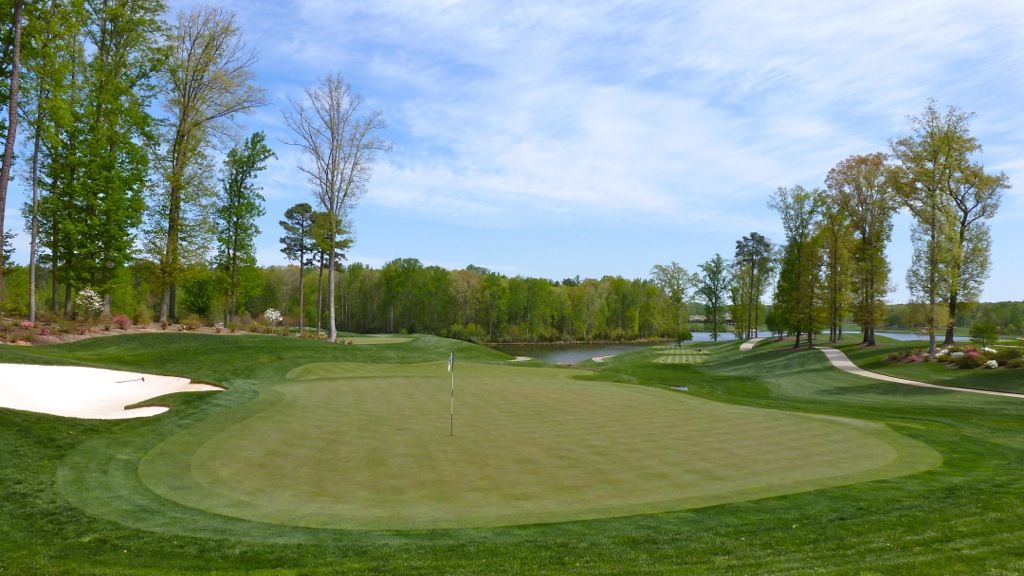
On a golf course known for its decision-making from the tee, the 18th stands in contrast as a hole that demands perfection. Water left; bunkers right -- hit it well or else!

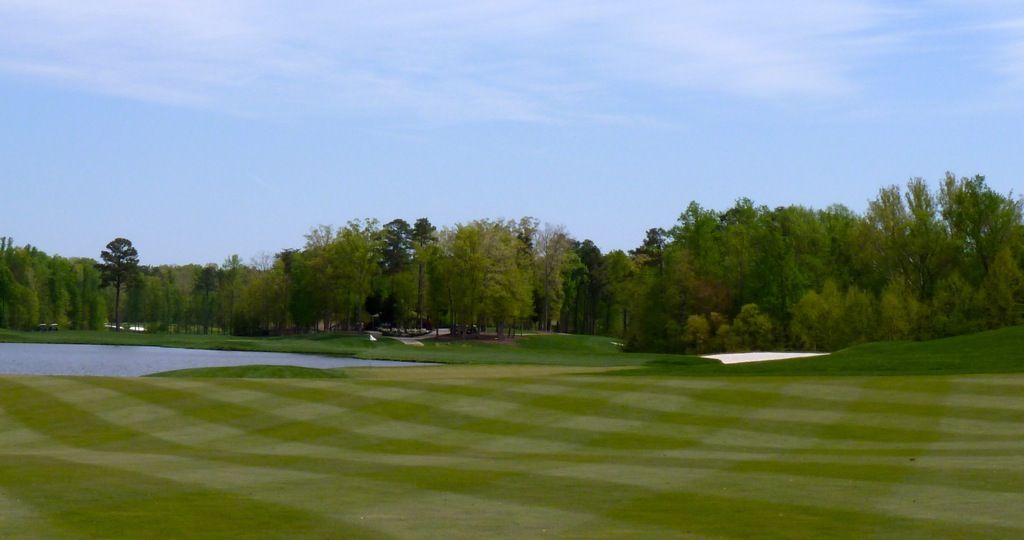
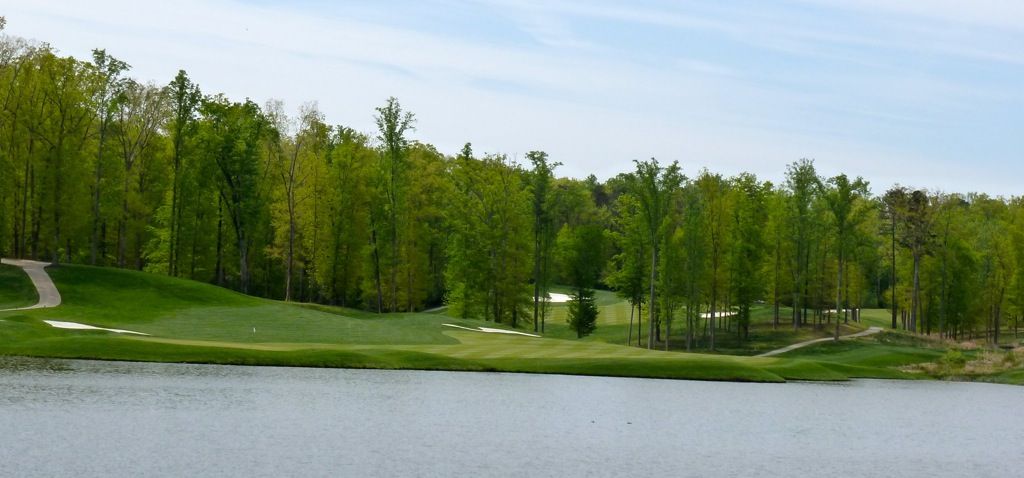
The 19th / bye hole:
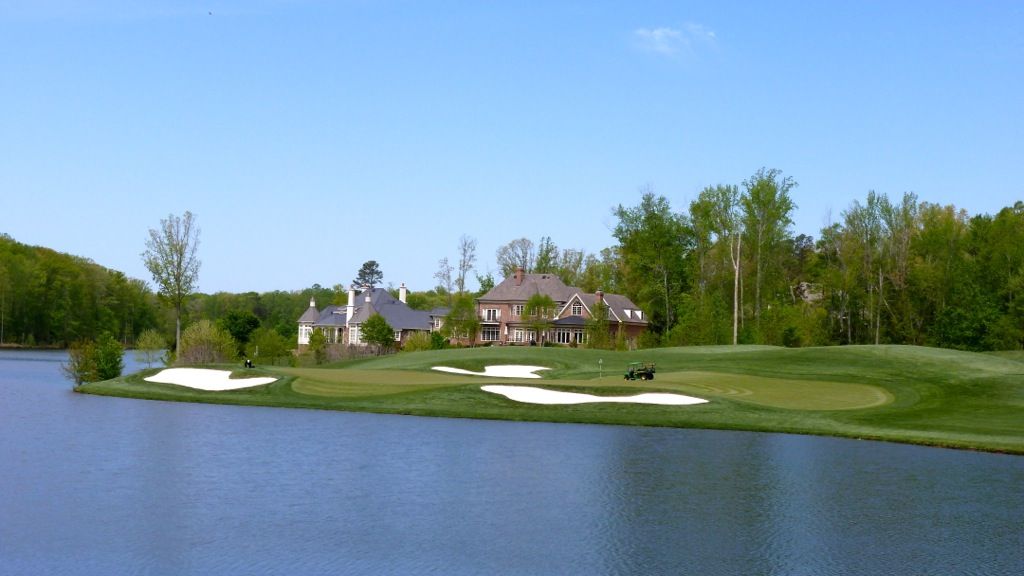
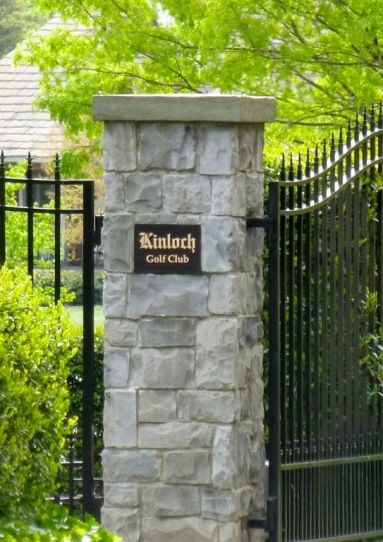
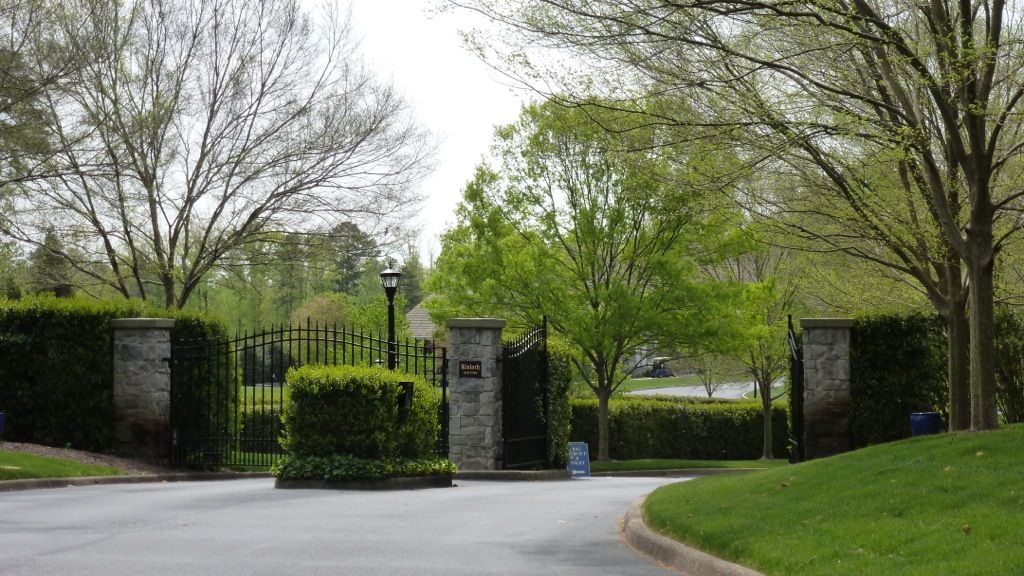
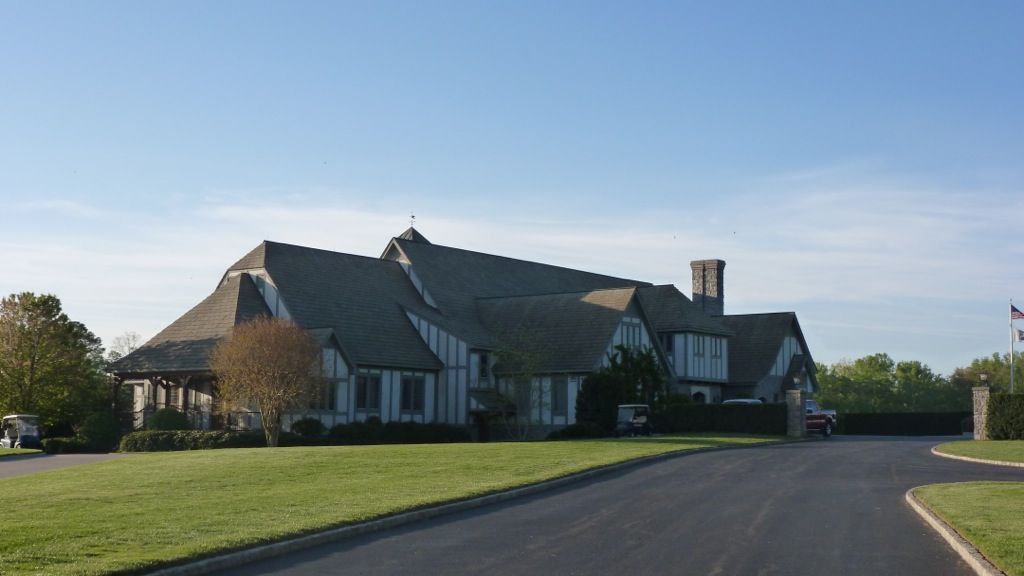
No comments:
Post a Comment